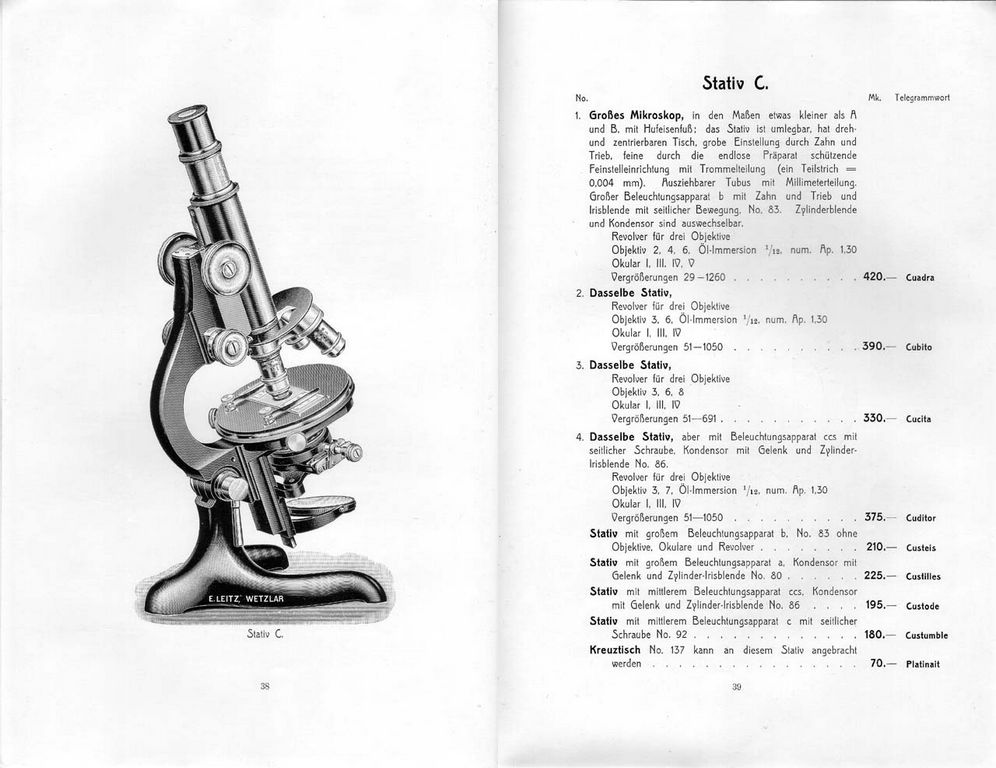
The success of that camera was enormous and well beyond expectations. This design formed the basis of the original Leica camera, as presented at the spring fair 1925 in Leipzig. Around this, he constructed a camera designed for casual snapshots.

Since he felt a ratio of 2:3 to be aesthetic, the resulting format was 24mm in height and 36mm wide.

#Ernst leitz wetzlar microscope 1922 24 serial
In 1924 Ernst Leitz II decided that in spite of the weak economy, the apparatus designed by his employee Oskar Barnack should enter serial production.Īs part of working on cinematic gear, Barnack had customized 35mm film for use in photographic cameras. Ernst Leitz died in July 1920 and the leadership of the company passed to his son, Ernst Leitz II.Īround 1920 Leitz employed around 1400 people, and by 1956, 6000. After the First World War, the economic situation of Leitz was dire. In 1913 it introduced a first fully functional binocular microscope. At the beginning of the new century, Leitz introduced eight-hour days and founded a health insurance society for employees. Its product range by this point included several optical instruments besides microscopes. Paul Ehrlich, inventor of chemotherapy, received the 150,000th one, and Nobel laureate Gerhard Domagk, discoverer of sulfonamides, the 400,000th Leica instrument.īy the end of the 19th century, the company had a worldwide reputation. Bacteriologist Robert Koch was given the company's 100,000th microscope in 1907. In 1887 the 10,000th microscope was shipped, four years later the 20,000th, and in 1899 the 50,000th was completed. By 1880, the company had reached an annual production numbering 500. Leitz microscopes improved on other models of their day in several ways, including lighting and optics, particularly with orthoscopic eyepieces. The microscopes were produced for biomedical as well as industrial purposes, including mineralogy. Consulting with his clients, he continued to refine the microscopes to their needs. Leitz introduced serial production, raising sales volume rapidly after 1871. Initially, Leitz was a part shareholder of the business (in 1865), but took over as sole owner in 1869 and continued it under his own name. He was trained as an instrument maker for physical and chemical apparatus and had several years' experience making watches in Switzerland.

(1843–1920) from Baden arrived at Wetzlar in 1864 and entered service at the Optisches Institut. Following his early death on, his widow continued the business he had left behind, the "Optisches Institut" (optical institute).
#Ernst leitz wetzlar microscope 1922 24 free
The ocular was capable of rendering an image with the correct perspective, free of the distortions typical of other microscopes at that time. 1922.Perea-Borobio CollectionĬarl Kellner, mechanic and self-taught mathematician, published his treatise Das orthoskopische Ocular, eine neu erfundene achromatische Linsencombination ( The orthoscopic ocular, a newly invented achromatic lens combination) in 1849, describing a new optical formula he had developed.


 0 kommentar(er)
0 kommentar(er)
